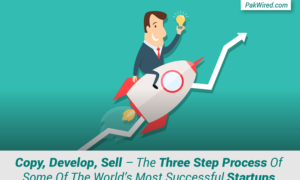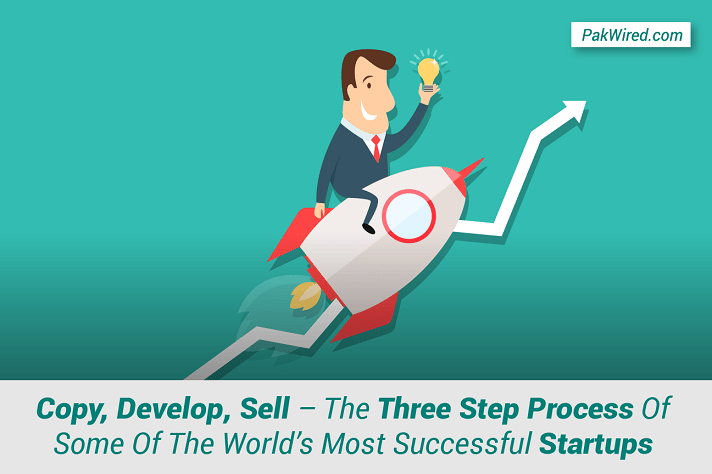For anyone living in Pakistan with an interest in business and technology, it’s highly likely you’ve heard of the success story that is EatOye. A food delivery service setup to rival the likes of Foodpanda, it was making considerable strides forward in the industry, looking set to be a major player, until Foodpanda came a long and purchased them for a reportedly considerable, yet undisclosed, sum.
Taking the approach Google do in many respects (“if they look interesting and / or are a potential threat, let’s buy them”), Foodpanda are once again the primary, dominant force in the country’s food delivery industry.
Although a positive story in general, what’s even more impressive is that EatOye was only around one year old at the time of acquisition, having just been setup (albeit out of base foundations of a similar business) in February 2014. That’s the closest thing to an ‘overnight success story’ you’re likely to get.
Whilst it’s not believed EatOye’s key focus was to have an exit plan of acquisition (at least not within 12 months), their entire story is one that is fascinating to see – and which is becoming increasingly prevalent in the startup scene – and can be summed up in three key points.
Copy
EatOye wasn’t revolutionary. It didn’t break huge ground in the industry, nor did it offer something completely different to any other food delivery service out there. What it did do, however, is understand what has worked elsewhere, and then do it just as good, if not better, than others.
As co-founder Rai Umair (alongside Nauman Sikandar) explained “They [Foodpanda] were already building the market and changing user preferences and we thought we could capitalize on that. Execution was key, and we were confident in our ability to do a better job”.
Although for some setting up a business based on what others have already done before you may not seem the most exciting or exhilarating, the reality is it can be the safest route to success – you know what has happened before, you know what the audience wants, but you also know where improvements can be made.
Develop
And it’s with this last point where the key focus comes, as if you can deliver a similar business model that goes above and beyond what others in the industry are offering, you’re going to stand out. In many ways, it’s as simple as that.
Competition is always healthy for both companies and consumers alike (hence why the organisations overseeing the likes of gas and electricity supply don’t allow one company within the industry to become too big), and in most markets there’s a big enough audience for there to be a number of players within it.
Plus, we can’t get around the fact consumers like choice.
For example, in the UK, there are four leading supermarkets, as well as two well-known budget supermarkets. In New York City you have five daily newspapers. In most cities in Australia you’ll be able to find dozens upon dozens of different options for fast food restaurants.
Giving consumers choice within an industry isn’t bad. It makes the organisations strive to deliver a better service than their counterparts, which when happens, results in a more respected industry in general.
And this choice doesn’t have to come in the form of companies being radically different to one another – the six UK supermarkets above all provide food and drink, at roughly the same price – it just needs to mean there’s something different on offer; something that’s going to appeal to a certain segment of the industry.
For EatOye, this difference came largely by way of the actual food ordering process, as whilst Foodpanda’s obviously worked, it wasn’t as quick or easy as it could have been, very likely resulting in large scale customer drop out at this point.
Get that fixed and you bring to market a service that does exactly what the consumer wants – and in general, is familiar to – but in a way that is better than what they have experienced. For the consumer, if they have a choice between ‘Good’ and ‘Excellent’, which one are they most likely to opt for?
Sell
So you have your company that’s based on an existing, successful model, but you’ve made a change to the offering and it’s now even more attractive. You launch it and it runs successfully for several months or years.
Tempted to keep on running it and grow your ‘baby’ into a lucrative business? Of course you are – but don’t be surprised if you receive more than a handful of offers to be acquired.
In fact, for many small business owners today, being acquired is a very real part of their exit strategy.
For someone only just entering into business, this may seem like a strange approach – why would you invest what could very likely be every spare hour and dollar you have into something, with the sole intention being to sell it on?
What about all of that love and passion you’ve given the project? What about that struggle so many small businesses used to have in terms of giving up part of their business, never mind all of that?
In many ways, that all began to change during the last dot com bubble, when companies were being invested in and acquired for huge sums of money. Look at the likes of Hotmail. A lone, small company for 12 months, it was purchased by Microsoft in late 1997 for US$400m.
Yahoo snapped up numerous companies around the same time, too – between 1998 and 2000, they officially acquired Viaweb, GeoCities, Broadcast.com and eGroups for a combined total of US$9.7 billion.
And although we hit a more cautious couple of years after this period, recent years have seen offers being made left, right and centre for small businesses. EatOye is a perfect example, but we just have to look at Google for numerous other examples – in the last 12 months, they have bought 22 companies, ranging from Finnish graphics compatability testing firm drawElements through to their most recent acquisition of Pixate, a company involved heavily in prototyping and design.
With all of these companies receiving vast sums of money in a relatively short space of time, as so many of the original owners will have had a single focus of making themselves financially stable, does it really make any difference as to whether you spend the next 30 years developing your business to do so, or get bought out after a couple and make the same, if not more, money?
I do think it’s important to note not all small businesses accept offers – SnapChat, for instance, were offered US$3 billion by Facebook not long ago, but turned it down – and for many, this comes down to personal preferences, the future scope of the business and where you genuinely believe you can take it alone.
To turn down US$3 billion, however, is big a decision. Evan Spiegel, SnapChat CEO, must have unrivalled confidence in his product.
Every small business owner has their own view. Sure, many want to sell up at the first opportunity, but many more want to be in it for the long term – and only you can make that decision on what to do.
All I can say is there is almost a proven model of setting up a lucrative business based on existing businesses, changing it so it brings something different to the market and then selling – and there’s no shame in this.
Particularly in the digital industry, where things move so considerably quickly and you might have opportunities coming in in abundance, whilst you may have had all the initial intentions of being the owner for decades, there are very few people who would look unfavourably on you if you were offered a life changing sum of money and decided to take it.


